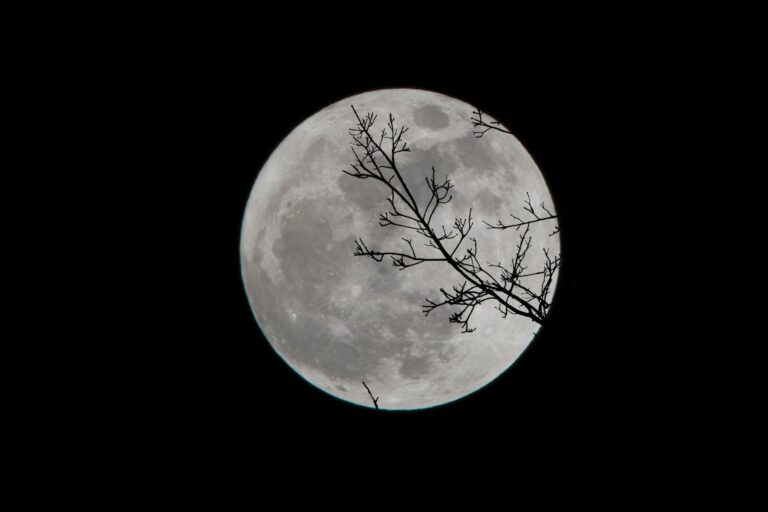Moon Phases and Stages of Sleep
Sleep is one of our most critical biological needs, yet it is highly sensitive to a myriad of factors. Even minor disturbances can lead to restless nights, leaving us groggy and fatigued the following day. Beyond essential nutrition, sleep is a requirement that must be met consistently, as chronic deprivation can result in various health issues. Sleep is complex and varies significantly among individuals; some thrive during nighttime while others are more alert in the morning. Regardless of personal preferences, there is one undeniable truth: every living being—humans, animals, and even plants—requires a period of rest to function optimally.
The Impact of Various Factors on Sleep Quality
Numerous elements affect sleep quality, ranging from medical conditions to environmental influences. In an age characterized by hectic schedules and unhealthy lifestyles, sleep disorders have surged in prevalence. While conditions like sleep apnea and chronic snoring are widely recognized, many other factors can compromise our sleep. Environmental elements, such as ambient light and noise pollution, also play significant roles. Additionally, stress can be a substantial barrier to restful sleep, leaving individuals feeling perpetually sluggish.
The Moon’s Role in Our Sleep Patterns
Surprisingly, the phases of the moon, known as lunar phases, may significantly influence our sleep patterns and overall sleep quality. These lunar phases not only affect human behavior but also impact the behavior of various animal species and even our oceans via tidal movements. Recent studies have demonstrated a correlation between lunar phases and sleep; chronic pain sufferers often report increased discomfort during certain phases. However, the intriguing connection between lunar cycles and human sleep was only established in recent years.
A groundbreaking study by Swiss scientists shed light on this phenomenon. Their research uncovered findings that explain why some nights lead to better sleep than others, linked to the phases of the moon.
Understanding the Phases of the Moon
The moon, Earth’s natural satellite, appears as a circular disc in the sky, illuminated by sunlight. It doesn’t produce its own light; instead, it reflects the sun’s illumination. Only half of the moon is lit at any given time, which is why we observe different lunar phases.
The lunar cycle lasts about 29.5 days, comprising eight distinct phases:
1. New Moon
During this phase, the moon is invisible to the naked eye as its unlit side faces Earth.
2. Waxing Crescent
Here, a small sliver of the moon becomes visible, gradually increasing in illumination.
3. First Quarter
This phase presents half of the moon illuminated, creating a distinct half-moon shape.
4. Waxing Gibbous
More than half of the moon’s surface is lit before it reaches full illumination.
5. Full Moon
The entire face of the moon is brightly lit, making it the most luminous phase.
6. Waning Gibbous
Following the full moon, the illuminated area begins to decrease.
7. Last Quarter
Another half-moon occurs, signaling the transition back into darkness.
8. Waning Crescent
Only a small portion of the moon remains visible, signaling the approach of the next new moon.
Understanding these phases is crucial as they can influence not only our environment but also our biological processes.
How Moon Phases Affect Sleep
Recent studies have shown that the phases of the moon significantly impact sleep quality. A pivotal 2013 study conducted at the University of Basel involved observing 33 volunteers in a controlled setting. Participants, both men and women aged 20 to 74, were monitored without any external cues like light to influence their circadian rhythms. Surprisingly, the findings revealed that during full moon nights, volunteers reported longer sleep onset times, poor sleep quality, and a notable decrease in melatonin levels—an important sleep hormone.
What Lies Behind These Sleep Variations?
Although the evidence suggests that sleep quality diminishes during full moon phases, the exact reasons remain elusive. Initial assumptions pointed to the moon’s gravitational pull affecting sleep, but researchers concluded that this is not the primary cause. They proposed that human internal body clocks are intrinsically linked to lunar cycles, forming a connection akin to our circadian rhythms—termed the circalunar rhythm.
Some researchers speculate that the diminished melatonin levels during full moon nights may be rooted in evolutionary traits. In ancient times, our ancestors likely utilized the bright light during full moon nights for hunting, an inclination that may still echo within us today.
Beyond Sleep: The Moon’s Broader Influence on Earth
While there is no definitive proof that lunar phases directly affect sleep, the moon undeniably influences several natural processes on Earth, notably tides. The gravitational pull of the moon causes the oceans to ebb and flow, demonstrating a tangible effect on our planet’s dynamics.
In summary, even if the moon’s impact on our sleep patterns is inconclusive, it provides an intriguing lens through which to explore human biology and behaviors. So the next time you find yourself feeling unusually tired, it might just be the phases of the moon influencing your rest!

















